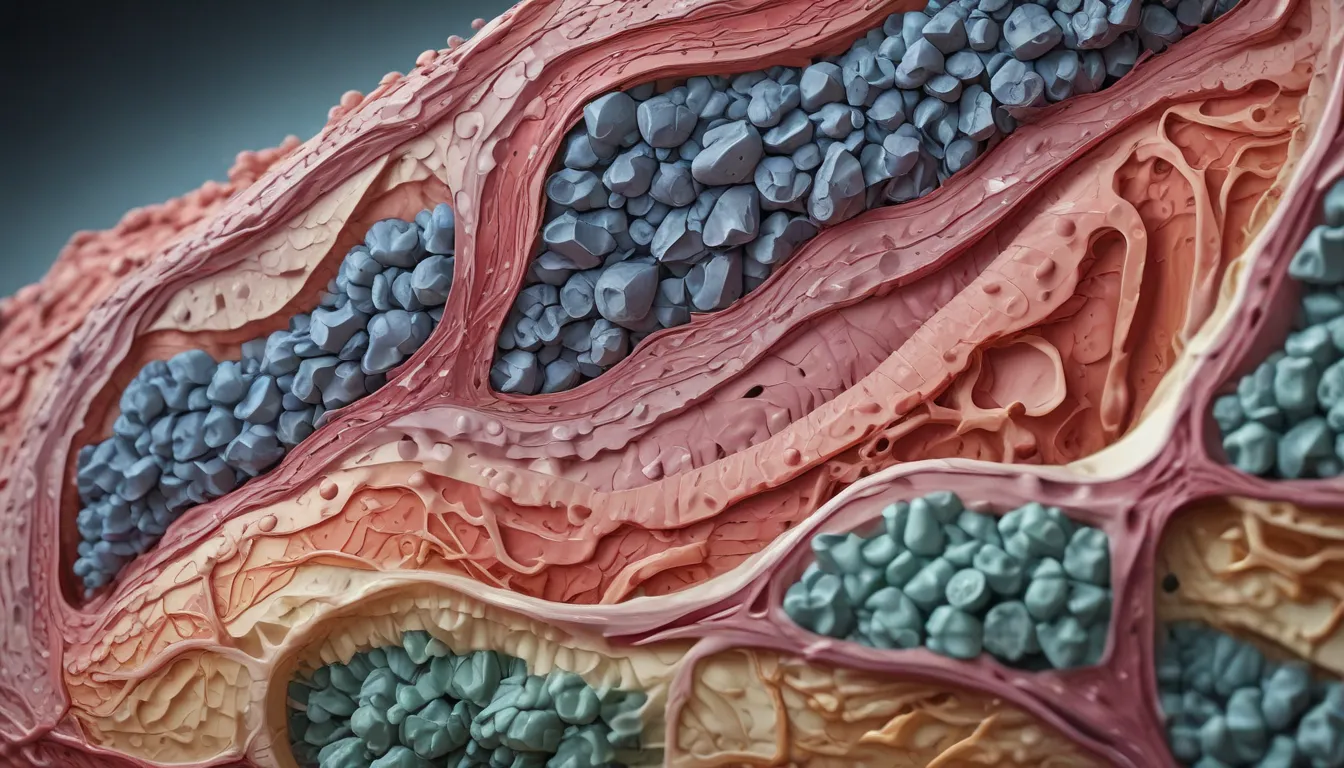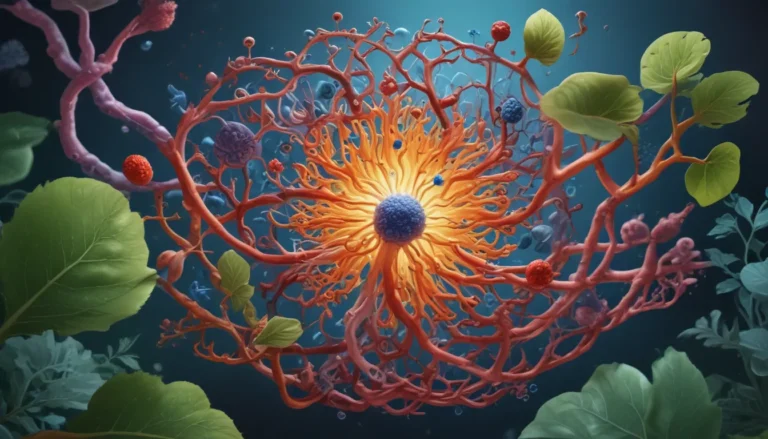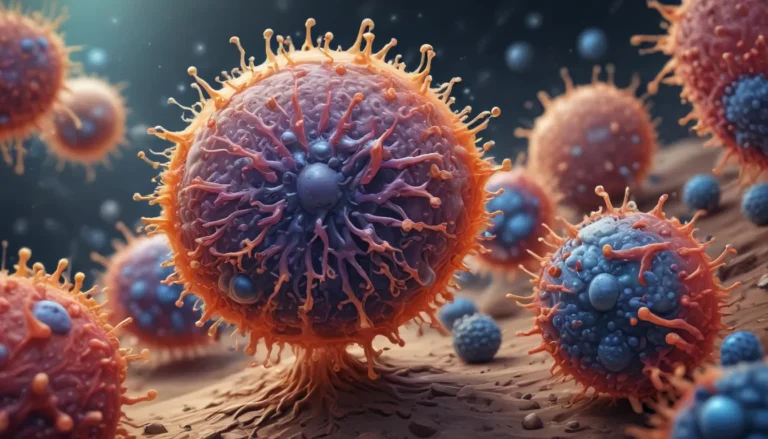A Note About Images: The images used in our articles are for illustration purposes only and may not exactly match the content. They are meant to engage readers, but the text should be relied upon for accurate information.
If you’ve ever marveled at the complexity of the human body, you have likely come across the wonders of epithelial tissue. This remarkable tissue is a crucial component found in various organs and structures, playing a vital role in protecting, absorbing, and facilitating communication with our environment. In this article, we will dive deep into the realm of epithelial tissue and uncover 20 unbelievable facts that will leave you in awe of its importance in our bodies. Get ready to be amazed by the fascinating world of epithelial tissue!
Unveiling the Wonders of Epithelial Tissue
Epithelial tissue is like the body’s protective armor, shielding organs and structures from harm, absorbing nutrients, and even helping us sense the world around us. This tissue acts as a superhero, regenerating quickly, producing mucus, and playing a vital role in the formation and development of our organs.
The Versatility of Epithelial Tissue
Epithelial tissue is the most common type of tissue in the human body, covering the surfaces of organs, lining body cavities, and forming the inner lining of blood vessels and other structures. It acts as a protective barrier, shielding underlying structures from physical injury, pathogens, and dehydration.
Delving into the Diversity of Epithelial Tissue
Epithelial tissue comes in various shapes and arrangements, classified as squamous (flat), cuboidal (cube-shaped), or columnar (column-shaped) based on its shape. It can be found in organs like the respiratory tract, digestive system, urinary system, and reproductive system.
The Multifaceted Functions of Epithelial Tissue
Epithelial tissue plays a crucial role in absorption, responsible for absorbing nutrients from the digestive tract and transporting them into the bloodstream. The tight packing of epithelial cells forms a barrier that prevents substances from easily crossing between cells.
The Incredible Adaptability of Epithelial Tissue
Epithelial tissue is avascular, meaning it does not contain blood vessels. Nutrients and oxygen are obtained through diffusion. Additionally, epithelial tissue can regenerate quickly, with high regenerative capacity to replace damaged cells relatively fast.
Specialized Structures in Epithelial Tissue
The surface of epithelial tissue can have specialized structures like microvilli and cilia, increasing surface area and aiding in transport. This tissue is also involved in sensory perception, with specialized cells in taste buds and olfactory epithelium detecting and transmitting sensory information.
Epithelial Tissue in Action
Epithelial tissue can secrete substances, with glands made up of epithelial tissue producing and releasing different substances for various functions. It is also essential for wound healing, with new epithelial cells migrating to cover damaged areas and restore the protective barrier.
The Dynamic Nature of Epithelial Tissue
Epithelial cells have a high rate of turnover, with a relatively short lifespan and constantly being replaced to maintain tissue integrity. It can be stratified or simple, consisting of multiple layers of cells in stratified epithelium and a single layer in simple epithelium.
Epithelial Tissue in Organ Development
Epithelial tissue is involved in the formation of glands, responsible for producing and releasing substances like hormones, enzymes, and sweat. It also plays a role in immune defense, containing immune cells that help defend against pathogens and foreign substances.
Embracing the Diversity of Epithelial Tissue
Epithelial tissue can stretch and expand, with transitional epithelium found in organs like the bladder that can accommodate changes in volume. It provides a smooth surface for efficient movement, lining the inner walls of blood vessels to allow red blood cells to flow smoothly.
Exploring the Intricacies of Epithelial Tissue
Goblet cells within epithelial tissue secrete mucus, lubricating and protecting certain passages. This tissue is essential for organ formation and development, giving rise to various organs and structures in the body during embryonic development.
Conclusion
Epithelial tissue is a fascinating and essential component of the human body, with diverse functions and remarkable adaptability that make it a subject of great interest in the field of biology. Understanding the intricacies of epithelial tissue not only expands our knowledge of the human body but also helps us appreciate its vital role in maintaining our health and well-being.
FAQs
-
What is epithelial tissue?
Epithelial tissue is a type of tissue that forms the protective covering or lining of body surfaces, organs, and glands. -
Where is epithelial tissue found in the body?
Epithelial tissue can be found in various parts of the body, including the skin, digestive tract, respiratory tract, kidneys, and blood vessels. -
What are the functions of epithelial tissue?
Epithelial tissue serves several functions, including protection, absorption, secretion, sensory perception, and filtration. -
How does epithelial tissue regenerate?
Epithelial tissue has a remarkable ability to regenerate. When the outermost layer of cells becomes damaged or worn out, new cells are continuously produced to replace them. -
Can epithelial tissue change its shape?
Yes, epithelial tissue can change its shape. This property, known as metaplasia, allows it to adapt to different environmental conditions and perform diverse functions.
Trust the information shared here to enlighten and inspire your curiosity about the marvels of epithelial tissue. The remarkable properties of this tissue make it a fascinating subject in the study of biology. If you found these facts intriguing, continue your exploration of epithelial tissues by delving deeper into the astounding world of the human body’s intricate design.






